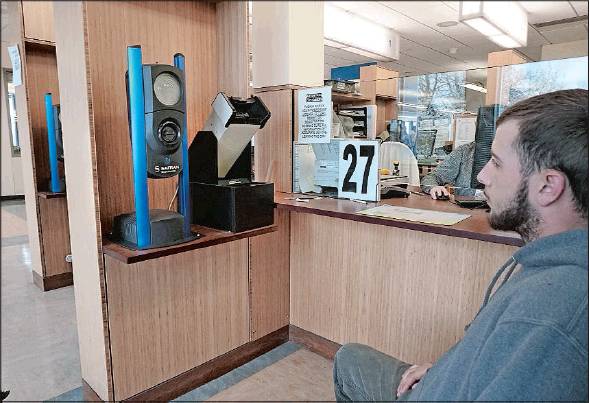DEPARTMENT OF MOTOR VEHICLES
Want a driver’s license? Better not smile
New rules for photo: Neutral expression, mouth shut, eyes wide open — and more
By Jennifer Bogdan Journal State House Bureau
CRANSTON — If you’re hoping that your next Rhode Island driver’s license photo will finally be the glamorous close up you’ve always envisioned, think again.
New facial recognition software being used by the Department of Motor Vehicles is making the eternal quest for a flattering driver’s license photo a pipe dream.
So wipe that smile off your face, tuck your hair behind your ears, and don’t even think about a coy tilt of the head. This photo will not be your next Facebook profile picture.
That’s what 16-year-old Rose Callanan found out when she got her photo taken at the Cranston DMV Thursday. It took at least three tries before the Providence teen took a photo that passed DMV standards.
Callanan’s offense: Her hair kept falling too close to her eyebrows.
What’s up with the new rules?
Paul Grimaldi, a spokesman for the DMV, said an “upgrade” to the agency’s cameras in the summer of 2016 as the state began issuing new driver’s licenses also resulted in upgrades to the state’s “facial recognition program.”
It’s all part of a push to improve ID security.
Callanan was at the DMV to get a photo taken for a Rhode Island ID needed to take the SATs. The same photo rules apply to state ID cards and licenses.
Signs posted around DMV cubicles in Cranston remind customers that “Everyone must take a new photo.”
A copy of the new photo guidelines developed by the state’s vendor, Morpho-Trust USA, states that images must now meet the following standards: “shoulders must be square to the camera; facial expression is neutral; the mouth is closed; the eyes are wide open (normally), hair must not cover the eyes or brow; remove all head covers and glasses.”
Additionally: “The face must be viewed in a frontal position with no more than 15 degrees of tilt [and] the entire face region must be inside the image.”
In some cases, even makeup could be problematic. Grimaldi said heavy makeup could potentially interfere with facial recognition technology.
“You will be unsurprised to learn that there has been a push nationally among motor vehicle and law enforcement agencies to improve credentialing systems as a way to deter fraud, identity theft and crime,” Grimaldi said.
“National standards developed in recent years [require] that certain features be easily discernible. For example, eyebrows, ears and chins must be unobstructed. Eyeglasses must be removed.”
But there are exemptions for religious items, such as headdresses, Grimaldi said.
The state has been tightening up its driver’s license security to comply with the federal Real ID Act passed in 2005 to thwart the use of fake IDs by terrorists. States that don’t comply with the stricter standards to prevent counterfeiting could eventually see their licenses not accepted for boarding airplanes.
Rhode Island is among the states operating under a waiver until October. DMV officials said it’s “premature to say what course of action the state will take come the fall in regards to Real ID compliance.” The new photo guidelines are part of the compliance process.
The newest generation of drivers, of course, doesn’t pick up on the difference in the new standards.
Jacob Smith, 18, of North Smithfield was at the Cranston DMV Thursday to get a photo for his driver’s permit. An employee told him to take off his glasses and look at the camera without smiling.
When asked if he thought the directive was strange, he said, “no” with a shrug.

